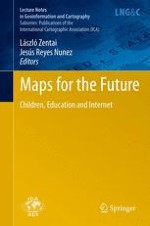2012 | OriginalPaper | Chapter
19. The World in Their Minds: A Multi-scale Approach of Children’s Representations of Geographical Space
Author : Veerle Vandelacluze
Published in: Maps for the Future
Publisher: Springer Berlin Heidelberg
Activate our intelligent search to find suitable subject content or patents.
Select sections of text to find matching patents with Artificial Intelligence. powered by
Select sections of text to find additional relevant content using AI-assisted search. powered by
